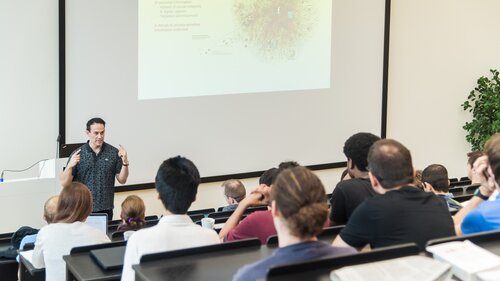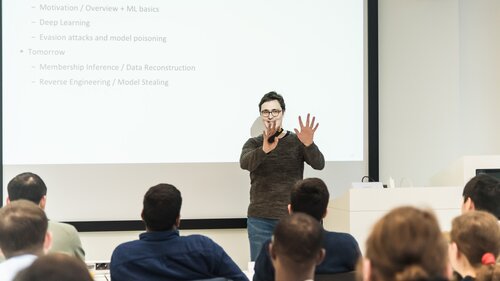TOPICS
PRIVACY AND MACHINE LEARNING
Prof. Dr. Mario Fritz,
CISPA
With the advance of machine learning techniques, we have seen a quick adoption of this technology in a broad range of application scenarios. As machine learning is becoming more broadly deployed, such approaches become part of the attack surface of modern IT systems and infrastructures. The class will cover several attack vectors and defenses of today's and future intelligent systems build on AI and machine learning technology.
Machine Learning Overview Machine Learning is a quickly advancing research area that has led to several breakthroughs in the past years. We will give a short introduction into some of the most relevant concepts -- including Deep Learning techniques.
Evasion attacks While there has been a leap in performance of machine learning systems in the past decade, still many open issues remain in order to deploy such models in critical systems with guarantees on robustness. In particular, Deep Learning techniques have shown strong performance on a wide range of tasks, but are equally highly susceptible to adversarial manipulation of the input data. Successful attacks that change the output and behavior of an intelligent system can have severe consequences ranging from accidents of autonomous driving systems to by-passing malware or intrusion detection. We cover techniques in the domain of adversarial machine learning that aim at manipulation the predictions of machine learning models and show defenses in order to protect against such attacks.
Inference attacks Machine Learning services are offered by a range of providers that make it easy for clients e.g to enable intelligent services for their business. Based on a dataset, a machine learning model is trained that then can be access e.g. via an online API. The data and the machine learning model itself are important assets and often constitute intellectual property. Our recent research has revealed that such assets leak to customers that use the service. Hence, an adversary can exploit the leaked information to gain access to data and/or the machine learning model by only using the service. We will cover novel inference attacks on machine learning models and show defenses that allow secure and protected deployment of machine learning models.
Privacy The success of today’s machine learning algorithms is largely fueled by large datasets. Many domains of practical interest are human centric and are target at operating under real-world conditions. Therefore, gathering real-world data is often key the success of such methods. This is frequently achieved by leveraging user data or crowdsourcing efforts. We will present privacy preserving machine learning techniques that prevent leakage of private information or linking attacks.
Aug 20, 11.00–12.30 pm + Aug 21, 1.30–3.00 pm
Dr. Yang Zhang,
CISPA
The past decade has witnessed the fast development of machine learning techniques, and the key factor that drives the current progress is the unprecedented large-scale data. On the one hand, machine learning and big data can help improve various domains of people's life quality. On the other hand, they can also cause severe risks to people's privacy. In this talk, I will present our research on the intersection of data privacy and machine learning. First, I will show how to use machine learning techniques to assess and mitigate privacy risks for various types of data, including social network data, location data, and biomedical data. Then, I will present our research on quantifying privacy risks caused by machine learning models. In particular, I will discuss our newest results on membership inference and data reconstruction.
Aug 21, 11.00–12.30 pm

Dr. Mathias Humbert,
Cyber-Defence Campus
Introduction to Privacy and Machine Learning
Machine Learning for Privacy, Privacy for Machine Learning
Aug 19, 1.00–2.30 pm + 3.30–5.00 pm

Prof. Dr. Vitaly Shmatikov,
Cornell Tech
This lecture will describe how machine learning models memorize training data and learn sensitive properties unrelated to the training objective. I will also explain how to infer the presence of individual data points in the training data and how to use this to audit the provenance of the model’s training dataset.
This lecture will focus on privacy issues in the emerging paradigm of federated learning, which aims to avoid centralized collection and processing of training data by distributing the learning process to individual users and devices.
Aug 20, 3.30–5.00 pm + Aug 21, 3.30–5.00 pm











